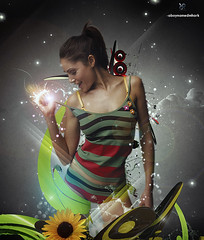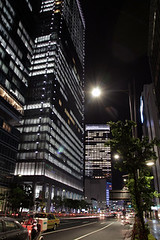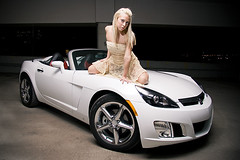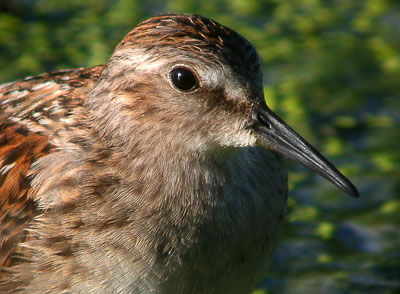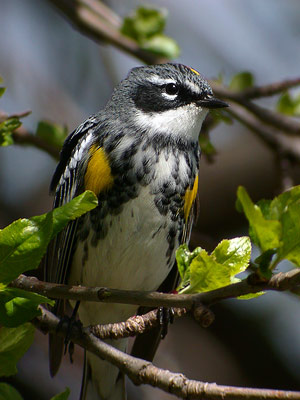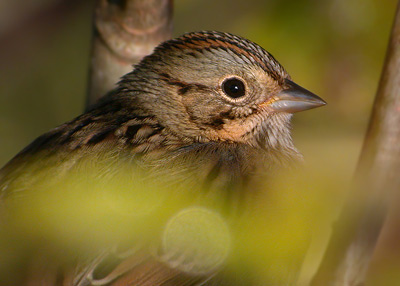Least Sandpiper
From this list of 10 resolutions for birders in 2008:
"10 Quit wearing white. Fewer birds will see you, so you'll have a better chance to see them. Birds naturally shy away from bright, reflective objects. There's a reason hunters and wildlife photographers wear camouflage."
Well, it depends. In my experience, camouflage has made very little difference in how birds react to my presence. More significant is how I behave around them. A birder dressed in jungle fatigues walking into an area where birds are present will be noticed just as much as one wearing a white t-shirt. In fact, a stealthy looking camouflaged human figure that appears to be stalking might even pose a greater sense of threat to a particularly leery bird that has no appreciation of how badly you want to photograph it.
Regardless of what color you're wearing, most birds will adjust to your presence so long as you sit or stand still, be silent, and if you have to move, do so with smooth and deliberate motion, akin to the gracefulness of a ballet dancer. If I need to reach for an adapter or fresh camera battery in my backpack, or lift my binoculars to check out what birds are in the area, I try to do so with as little jerkiness as possible. Birds will invariably react to a sudden shift in position or any sharp sound, like sticks breaking from being stepped on
Yellow-rumped Warbler
Will you see fewer birds when wearing white? Probably not. Recall the Northern Shrike experience I had a few weeks ago – the bird that perched mere feet from me. It didn't seem to mind at all that I was wearing all white. Perhaps I was truly and completely camouflaged. The greater need for the shrike at the time was catching a mouse it had spotted just behind me. As I stood perfectly still, I was fortunate to receive the shrike encounter of a lifetime, clad in white.
Lincoln's Sparrow
Getting close to birds is an art that requires dedication and patience. As Arthur Morris said, "If you persevere, good photographic opportunities will eventually present themselves." My photographic goal is to walk off the field with portraiture that shows a bird at its best and minimize whatever impact my presence has on it. Birds will almost always exhibit a certain amount of concern when I first enter an area, but I give them a chance to adjust. Usually within 5 to 10 minutes, they will go about their routine activities once they've decided I'm not a threat.
I know this may sound a little counterintuitive, but when I'm super close to a bird, I avoid making eye contact with it as I photograph – I'll act as if I have no interest whatsoever in it. You can try this during your approach, too. However, when a bird has a problem with my presence, I slowly back away, leave the area and try a different location. Few people have observed me digiscoping and the reason is that it requires silence and a minimum number of objects (potential threats) for the bird to assess and concern itself with. I've photographed around 180 bird species and the color of my field clothing has made very little difference in the quality of my work. What has mattered more is how I've behaved around them.
All images © 2008 Mike McDowell




